03 Jun May 2022: Building in the South Carolina Coastal Lowcountry
Posted at 18:38h
in
Newsletters
by Willis Ponds


Office: 843 846 2500
www.WillisSinclair.com
Info@WillisSinclair.com
Excellent Quality. Exceptional Service.
May 2022
Number 99

Merry, our oldest granddaughter likes to be in style.
Merry is kneading dough for bread or cinnamon rolls. She bakes for her family and sells baked goods in town. Merry likes to be in style –notice the high heels.
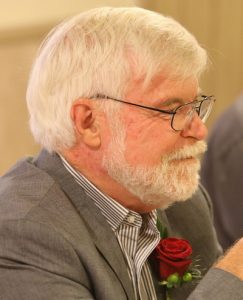 From the desk of Bill
From the desk of Bill
Kandy and I just got home from a trip to the Springfield, Missouri area to visit our son and his family. On the way, we also had a short visit with a couple of our daughters and their families in the Knoxville area. Although it should not really surprise me, I am surprised when I see how much the grandchildren have grown. We got to see 30 of our grands in a little over a week.
One is graduating from a community college early in May. He will then head to the University of Tennessee to study electrical engineering – following in his daddy’s and grandfather’s (my) footsteps. We will go to Knoxville for the ceremony and stay a week or so.
One of the things we have been doing on our trips since I have sort of retired is to stay off the Interstates. That adds about four hours to the trip to Springfield, but when we break the trip up into three days, that is not bad. It is nice to go through rural American and small towns. Traffic is usually light on the “blue” roads. (As you may remember, back in the day when gasoline stations gave away state road maps, the main roads were usually colored red and the secondary roads, blue.) It is fun to discover new places for coffee or a snack as we go through small towns.
In a month or so (June 1), we will begin our Western Trek with four more grandchildren. On our previous two western trips, Mandy and Jessy have gone with us as we took four grands. We got two rooms each night. Mandy and Jessy took two grands and we took the others. This trip, it will just be Kandy and me since the girls are busy with Twig and other tasks. What we have decided to do this time is take two grands for a couple of weeks and then two more for another two weeks. Our first trip will be to Yellowstone and sights along the way (stage coach rides, horse back rides, etc.)
|
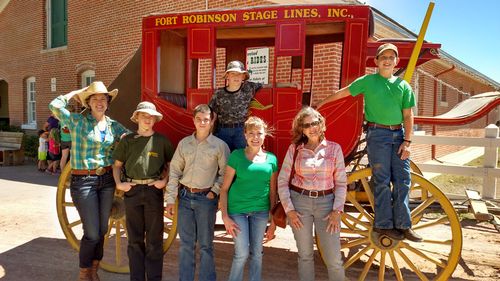
Our trip in 2016
At Fort Robinson State Park, Nebraska, you can ride on a real stagecoach pulled by a couple of horses or mules. The ride is short — maybe 10 minutes, but a lot of fun. They also have trail rides and a weekly rodeo. We have stopped by here a number of times.
(L to R) Mandy, Jack, Henry, Jon, Jessy, Kandy and Jerry. I was behind the camera. Jack and Jon are brothers from the Springfield area. Henry and Jerry live here in South Carolina. This photo was taken 6 years ago.
|
When we return from our two week trip to Yellowstone, we will drop off two grands and pick up two more. (All four making these trips are siblings living near Springfield.) Our second trip will be to the Grand Canyon and various points along the way. We are also planning a train ride on the Cumbres & Toltec Railroad, a narrow gauge old mining railroad.
|
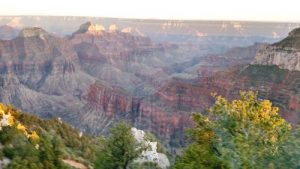
The Grand Canyon
I took this photo of the Grand Canyon from the North Rim. The South Rim is in the background. It is about 15 miles away. The Colorado River in the bottom of the canyon is over a mile below this point.
|
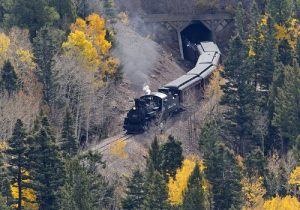
Cumbres & Toltec Railroad
The Cumbres & Toltec Railroad is a narrow gauge (3′) that crosses the Colorado – New Mexico state line 11 times on its 64 mile trip.
|
This is the 99th newsletter we have published. Most of them are on our website:
Unique Issues When Building in the Coastal South Carolina Lowcountry
Homebuilding costs here in the coastal lowcountry tend to be a little higher than other parts of the country for several reasons. One is that this area is in an earthquake zone. Since we are in an earthquake zone, the building code requires a more solidly constructed home. At Willis Sinclair, we routinely exceed the building code standards, even the earthquake standards, because we build homes that will last generations.
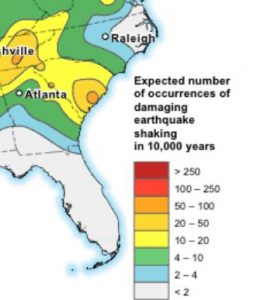 |
National Seismic Hazard Map
USGS (United States Geological Survey) National Seismic Hazard Map shows how often an earthquake is likely to happen. The orange circle around the Charleston area indicates a significant earthquake is expected every 100 to 200 years. |
Another cost driver in the coastal Lowcountry is more well known than the earthquake risk. It is hurricanes (and tornadoes). Building code again has more rules for homes being built in hurricane zones. Typically, we use standards developed in Dade County (Miami), Florida – the strictest standards in the country. Again, we routinely exceed the building code requirements.
Hurricane Risk Map
This map shows the risk of a hurricane. We are in Zone A, the most likely area for hurricane landings. Zone A goes from Charleston to Savannah. Hurricanes bring large amounts of rain, wind and occasionally tornadoes. |
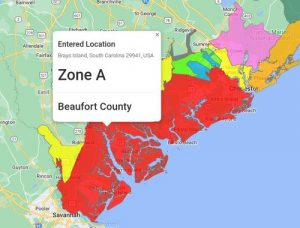 |
Typically, we use around five thousand dollars worth of steel to securely tie a home to its foundation using 1/2″ threaded steel rods, 5/8″ threaded steel rods or sometimes steel cables. In any case, the top plate (the top of the wall) is tied securely to the foundation. Since the foundation often weighs well over 100 tons, the house is unlikely to go anywhere.
Probably the biggest risks during a storm are not a house collapsing, but falling trees or flying debris. There is little we can do about that. During a hurricane, sometimes trees that have been standing for years will break or be ripped out of the ground because the ground is saturated with water.
Low, sandy soil is also a potential problem. When we dig footers, we have a soil compaction (required by the building department) test conducted. If the soil is not solid enough, we have to add rock or take other remedial steps. We have even installed steel piers under three houses just to make sure they would not settle. There is no bedrock close to the surface so homes “float” on the surface.
Sometimes underground water is a problem. Water saturated soil will not support much weight, so we have to resort to “dewatering.” This is done by digging a trench downhill from the building site and laying down gravel so water will collect. Then a pump is placed in the gravel. Whenever the water in the trench builds up much , the pump removes it. We leave the pump in place until construction is completed. When the soil is (relatively) dry, we can build on it. The weight of the foundation and house will prevent the water from accumulating.
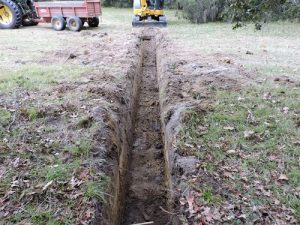 |
Dewatering
This is a dewatering trench we dug on one of our projects. In the background, you can see a dump trailer. it is full of gravel that will be placed in the trench. There was a pump at one end of the trench to remove the water. |
We also face issues common to most locations including working in very hot or cold temperatures. Here in the Lowcountry, the temperature extremes seem a bit worse because of the typically high humidity. Installing roofing when the temperature is over 90 and the humidity is high is like working in a frying pan.
In spite of the challenges, we build solid, quality homes. We are in business for the long haul so we make sure everything we do meets or exceeds our client’s expectations. Our number one goal is for the homeowner to be happy with their home once the project is complete as well as for many years to come.
If you have any comments or questions, call or text us (843 846 2500), email us (info@willissinclair.com) or stop by one of our jobs. We work exclusively on Brays Island.



 From the desk of Bill
From the desk of Bill










No Comments